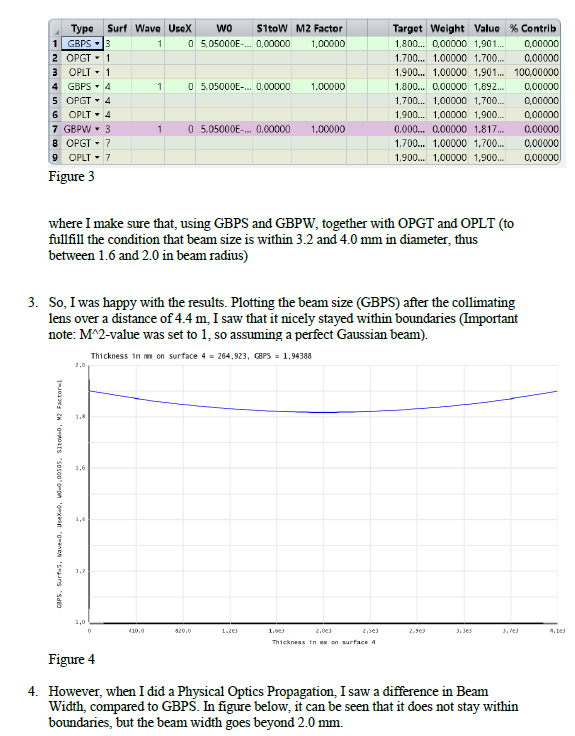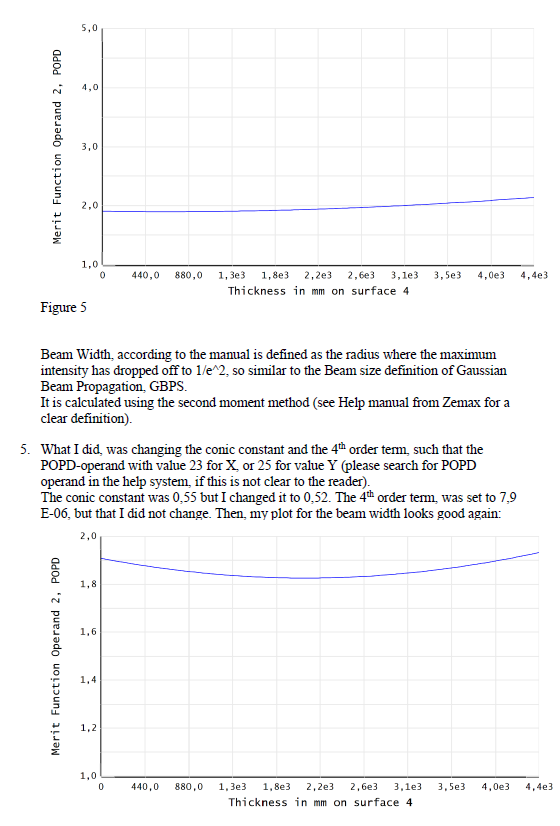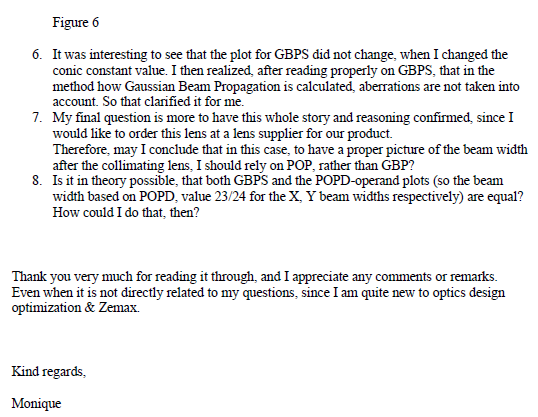Dear community,
I wanted to simulate the collimation of laser light that comes out of a single-mode fiber.
Wavelength = 1550 nm;
beam waist at fiber = 5,05E-3 mm;
In more details, my goals are:
(i) collimate the laser light and make sure that the beam width (i.e., the diameter) of the light after the collimation lens is within 3.2 and 4.0 mm. This was my primary concern.
(ii) collimator lenses are often aspheres, with a conic constant and a 4th-order term filled in. I did not do any optimization for these values first, only when I came across the notion that Gaussian Beam Propagation (GBP) and Physics Optics Propagation (POP) were different from each other. That’s also my question about.
Since, I first wrote down my question in word, it seems that it was not copied well from word to here. It complains that I have reached the maximum number of characters of 5000, but in word, the number of characters is not beyond that. I have therefore, attached my question as a pdf. In the meantime, I'll try to fix it.









